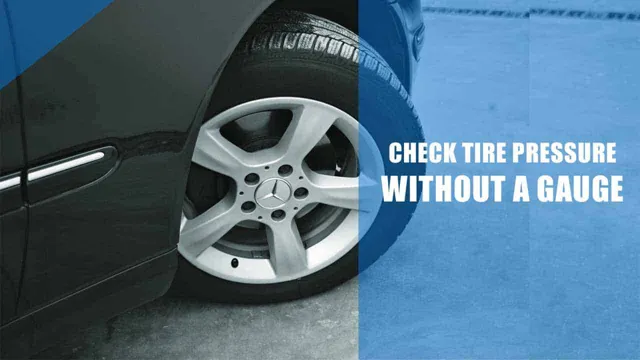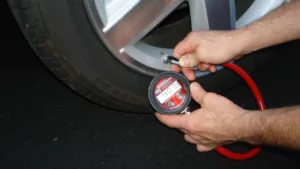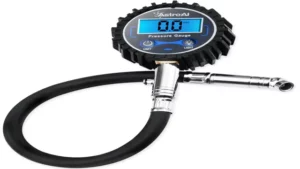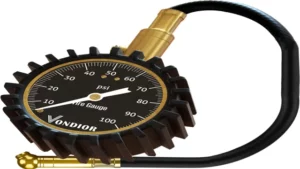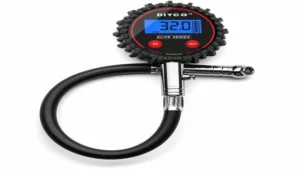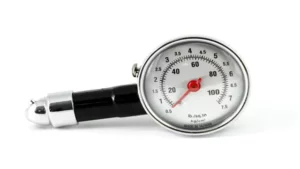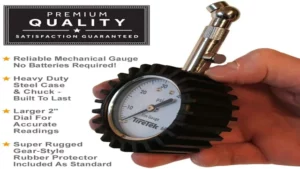Did you know that keeping the correct tire pressure is crucial for your safety on the road and can also improve fuel efficiency? However, simply guessing or assuming your tire pressure can be risky. This is why having an accurate tire pressure gauge is important. But how do you really know if the tire pressure gauge you are using is accurate? In this blog post, we will guide you through some simple steps to check the accuracy of your tire pressure gauge, ensuring that you are getting reliable and precise readings every time.
So, fasten your seatbelt and let’s get started!
Understanding the Importance of Accurate Tire Pressure
Checking your tire pressure regularly is important for a number of reasons. One of the most important is safety – when your tires are underinflated, they can lead to poor handling, reduced braking ability, and even blowouts. That’s why it’s important to know how to check tire pressure gauge for accuracy.
One way to do this is to use a calibrated pressure gauge to compare your tire’s pressure to the recommended levels provided by your car’s manufacturer. You should also make sure that your gauge is accurate by testing it against a known standard. In addition to safety, proper tire pressure also improves your car’s fuel economy and extends the life of your tires.
So, take the time to check your tire pressure regularly – it’s a simple step that can make all the difference on the road.
Fuel Efficiency
Fuel efficiency is an incredibly important topic in today’s world. With gas prices on the rise and environmental concerns growing, people are constantly looking for ways to save money and reduce their carbon footprint. One way to improve fuel efficiency is by ensuring your tires have accurate air pressure.
When your tires are underinflated, it can cause them to drag on the road, creating more friction and using more fuel to move the vehicle. On the other hand, overinflated tires can cause the vehicle to bounce around, which can be dangerous and also lead to decreased fuel efficiency. It’s important to check your tire pressure regularly and maintain the recommended level to ensure your vehicle is operating at peak performance.
By doing so, you will not only save money on gas but also reduce your carbon emissions. It’s a small change that can make a big impact on your wallet and the environment.
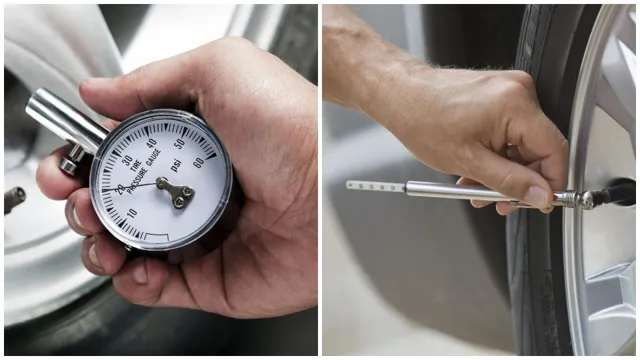
Tire Lifespan
As drivers, we often neglect to check the air pressure in our tires. However, accurately maintaining tire pressure is crucial to increase tire lifespan. Tires that are underinflated wear out faster, which can result in more frequent replacements, leading to increased costs.
Overinflated tires, on the other hand, can cause the tire to burst and result in dangerous situations. Maintaining accurate tire pressure can also improve safety by providing better handling and control on the road. Checking tire pressure regularly, especially before long drives, is essential to preventing unexpected and costly tire issues.
So next time you get in your car, take a minute to check your tire pressure and keep your wallet and yourself safe.
Types of Tire Pressure Gauges
If you ever notice that your tires seem a little low on air pressure, it’s important to check them with an accurate tire pressure gauge. But how can you be sure that the gauge you’re using is actually accurate? There are a few different types of tire pressure gauges available, each with their own pros and cons. One common type is the pencil gauge, which is inexpensive and easy to use but may not be as accurate as other types.
Digital gauges are often more accurate and easier to read, but may be more expensive. And then there are inflator gauges, which not only measure pressure but can also add air to your tires if needed. Whichever type of gauge you choose, be sure to test it periodically against a known accurate gauge to make sure it’s still working properly.
With a good gauge and some regular maintenance, you can ensure your tires are always at the right pressure for optimal safety and performance.
Analog Gauge
If you’re thinking about purchasing a tire pressure gauge, you may be overwhelmed by all of the different types on the market. One option is an analog gauge, which is a simple and affordable choice. They’re easy to use, reliable, and durable.
Analog gauges work by using a small stick that pops out of the device to measure the pressure of your tires. The stick will move as air fills the tire, giving you an accurate reading of your tire pressure. One great benefit of an analog gauge is that you don’t need batteries to operate it, so you can use it anytime, anywhere without worrying about power.
Overall, if you want a straightforward and reliable tire pressure gauge that won’t break the bank, an analog gauge is a great choice.
Digital Gauge
When it comes to keeping your tires properly inflated, having a reliable tire pressure gauge is key. There are several types of gauges to choose from, each with its own benefits and drawbacks. The most common type is the analog gauge, which uses a simple mechanical system to measure tire pressure.
These are often less expensive than other types of gauges, but they can be slightly less accurate. Digital gauges, on the other hand, use electronic sensors to provide incredibly precise readings. They may be a bit more expensive, but their accuracy and ease of use make them a popular choice among car owners.
Another type of tire pressure gauge is the pencil gauge, which is small and easy to carry around in a glove compartment or toolkit. These gauges are inexpensive and very reliable, but they are a bit less precise than digital or analog gauges. Ultimately, the type of tire pressure gauge you choose will depend on your personal preferences and needs.
Calibrating Your Tire Pressure Gauge
Are you unsure about the accuracy of your tire pressure gauge? It’s important to ensure your gauge is working properly to avoid over or under-inflating your tires. Luckily, calibrating your gauge is a simple process that can be done at home. Start by checking the manufacturer’s specifications for your gauge, as each model may require a slightly different method.
Next, find a reliable air compressor with a gauge to compare your tire pressure gauge readings. Inflate your tire to the recommended pressure, then use your gauge to check the pressure. If the two readings don’t match, adjust your tire pressure gauge accordingly.
Repeat this process a few times to ensure consistent accuracy. Properly inflated tires not only improve fuel efficiency, but also reduce the risk of blowouts and increase overall safety on the road. So, take the time to calibrate your tire pressure gauge and drive with confidence knowing your tires are properly inflated.
Step-by-Step Guide
When it comes to maintaining your vehicle, keeping an eye on your tire pressure is crucial. However, to get an accurate reading, it’s essential to calibrate your tire pressure gauge regularly. Here’s a step-by-step guide on how to calibrate your tire pressure gauge to ensure a precise reading every time.
Step 1: Purchase a high-quality tire pressure gauge from a reliable brand. Step 2: Locate the calibration screw found on your tire pressure gauge. It’s usually located at the bottom of the gauge.
Step 3: Use a small screwdriver to turn the calibration screw clockwise or counterclockwise. This action will adjust the gauge’s calibration. Step 4: In a standard calibration method, attach the tire pressure gauge to the tire valve stem and take a reading.
Then, take three more readings and compare the averages of the four readings to ensure accuracy. Step 5: Adjust the calibration screw again as needed if the readings differ significantly. In conclusion, calibrating your tire pressure gauge is an essential aspect of maintaining the health of your vehicle’s tires.
Follow these steps regularly to ensure an accurate reading, and avoid the risk of over or under-inflating your tires. Keep in mind, using a high-quality gauge can help provide more reliable readings and extend the life of your tires.
Testing Your Gauge for Accuracy
Checking your tire pressure regularly is crucial to ensure your safety and the longevity of your tires. However, using an inaccurate tire pressure gauge can lead to incorrect readings, which can be dangerous. To check your gauge’s accuracy, you can use either a calibrated master gauge or a digital pressure gauge.
Digital pressure gauges are highly accurate compared to analog gauges, which can suffer from wear and tear over time. A calibrated master gauge, on the other hand, is a highly accurate tool and is mainly used to calibrate other gauges. To check your gauge’s accuracy, compare the readings from multiple sources, including your gauge, a master gauge, and a digital gauge.
Once you determine if your gauge is accurate, you can fix or replace it as necessary to keep your tires’ pressure at optimal levels. Always remember to store your gauge in a secure location and protect it from damage to ensure its accuracy and longevity.
Using a Known Accurate Pressure Gauge
If you want to ensure that your pressure gauge is accurate, the best way to do so is by using a known accurate pressure gauge to test it. This involves connecting both gauges to the same pressure source and comparing the readings. It is important to note that even the most accurate pressure gauges can experience minor inaccuracies over time, so it is a good idea to periodically check and recalibrate your gauges as necessary.
Regularly testing your pressure gauge not only ensures accurate readings but can also help identify potential issues before they become major problems. As with any measurement tool, accuracy is key, and a small error can lead to significant risks and costs down the line. So, make sure you regularly check your pressure gauges to ensure accurate and reliable performance.
Checking Pressure and Comparing Readings
One important aspect of maintaining your vehicle is regularly checking the tire pressure. However, it’s essential to ensure that the gauge you’re using to measure the pressure is accurate. To test your gauge’s accuracy, you can take it to a mechanic or use a standardized gauge to compare readings.
It is crucial to keep in mind that even high-quality gauges can lose accuracy over time, especially if they have been dropped or mishandled. So, it’s a good idea to test your gauge periodically to ensure it is still providing accurate readings. Accurate tire pressure readings are crucial for your safety and fuel efficiency, and keeping your gauge calibrated is an important step in ensuring both.
Conclusion – Importance of Regular Tire Pressure Checks
In conclusion, checking your tire pressure is a crucial part of maintaining your car’s health and performance. However, using an inaccurate tire pressure gauge can lead to disastrous consequences. So next time you check your tire pressure, make sure to give your gauge the proper attention and care it deserves.
Don’t trust it blindly, test it for accuracy using a trusted reference tool, and never underestimate the power of a properly inflated tire. After all, a good gauge is worth its weight in air pressure!”
FAQs
What is tire pressure gauge accuracy and why is it important?
Tire pressure gauge accuracy is the ability of the gauge to provide a precise measurement of tire pressure. It is important because correct tire pressure can improve fuel efficiency, tire life, and vehicle performance.
How can I check the accuracy of my tire pressure gauge?
To check the accuracy of your tire pressure gauge, use a calibrated gauge to measure the pressure in your tire. If the readings are different from your tire pressure gauge, it may be inaccurate.
How often should I check the accuracy of my tire pressure gauge?
It is recommended to check the accuracy of your tire pressure gauge at least once a year, or if you suspect it is giving inaccurate readings.
Can temperature affect the accuracy of a tire pressure gauge?
Yes, temperature can affect the accuracy of a tire pressure gauge. As temperature increases, air molecules expand, which can cause the tire pressure to increase and the gauge to give inaccurate readings.
How does over-inflating or under-inflating my tires affect my tire pressure gauge accuracy?
Over-inflating or under-inflating your tires can cause inaccurate readings on your tire pressure gauge. It is important to maintain the correct tire pressure to ensure accurate readings.
Why should I use a digital tire pressure gauge instead of an analog gauge?
Digital tire pressure gauges are more accurate and easier to read than analog gauges. They also do not require calibration, which can save time and money.
What should I do if I suspect my tire pressure gauge is inaccurate?
If you suspect your tire pressure gauge is inaccurate, it is recommended to replace it with a new one. A faulty or inaccurate gauge can lead to incorrect tire pressure, which can affect vehicle performance and safety.
